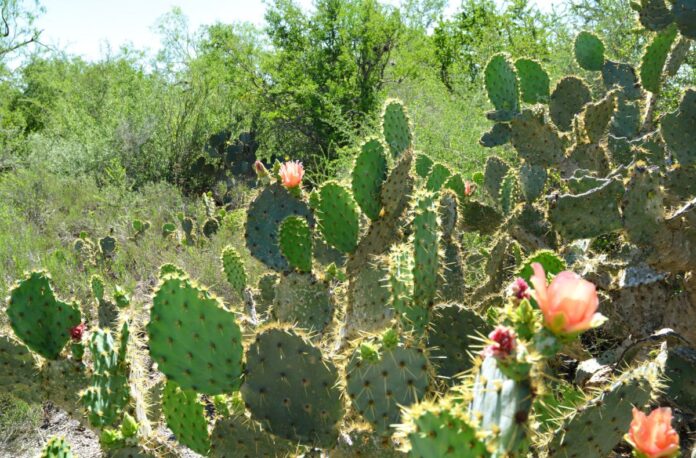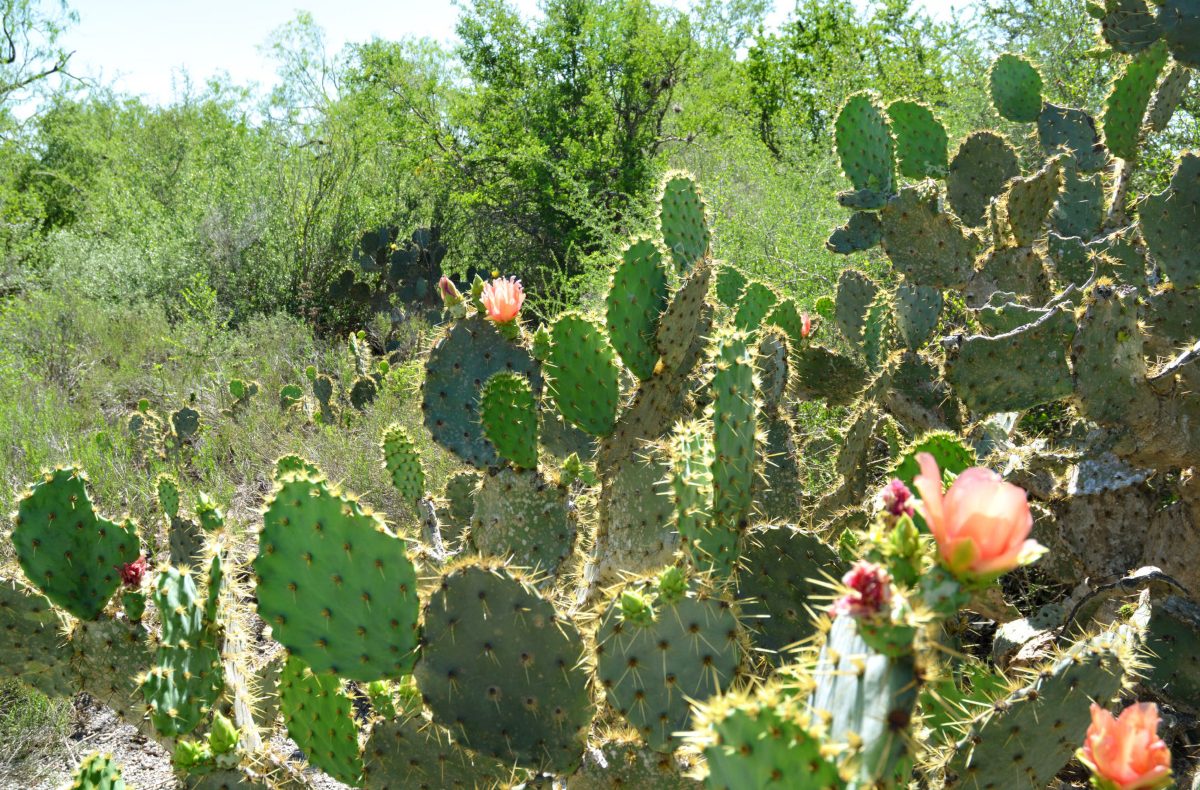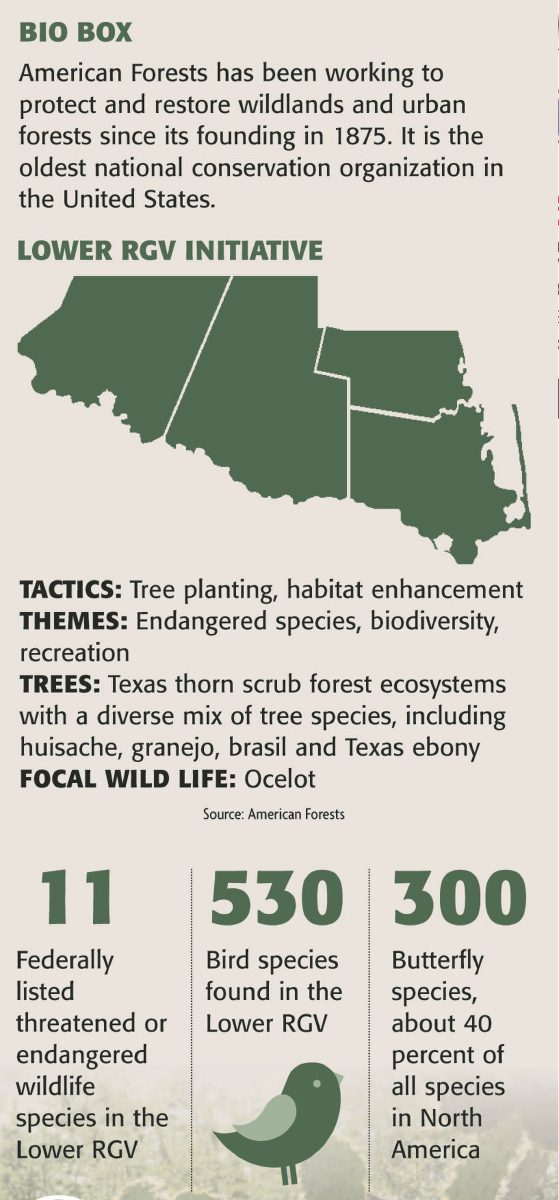
HARLINGEN — The conservation group American Forests is stepping up its focus on restoring native habitat in seven different areas in the United States, including the Lower Rio Grande Valley.
The habitat restoration this year of 290 acres will occur in what the conservation group calls the Rio Grande River Corridor, the Gulf Coast Corridor and the Northern Ranchland Corridor.
“The launch of this new initiative could not be more timely, given the current political efforts to roll back protections for vulnerable American wildlife populations,” said Scott Steen, president and CEO of American Forests.
Last year, nearly 1,500 volunteers attended the RGV region’s annual Rio Reforestation event to plant trees.
Among the participants were volunteers from IDEA Academies, Science Academy, the Boys and Girls Club, eight local junior high and high schools, the Girl Scouts and Boy Scouts, Texas State Technical College, UTRGV, South Texas Community College, AmeriCorps, 4-H and others.
The Tamaulipan thorn scrub which forms the native ecosystem in wild areas in the Lower RGV has been extensively cleared for agriculture over the past 100 years. Vegetation is characterized by dense brush, cactus and a mix of tree species, and is unique to Texas among U.S. states.
Since the 1920s, an estimated 95 percent of Tamaulipan thorn scrub in South Texas has been cleared for farming and other development, a critical loss of habitat to mammals like the endangered Texas subspecies of ocelot which numbers only about 80 cats.
As difficult as it is to clear Tamaulipan thorn scrub, it is just as hard to restore it.
Experts on re-creating this native ecosystem say restoring tracts of land to historically natural states can take 20 to 30 years until the plants establish themselves.
“American Forests was founded for the purpose of protecting and restoring forests,” said Jeff Lerner, vice president of conservation programs for the group. “In many of our forest ecosystems today we find ourselves at an environmental crossroads of crisis and opportunity with dwindling habitats, but also the tools to accelerate the recovery of these systems.”
The effort by American Forests parallels the U.S. Fish and Wildlife Service’s Ocelot Recovery Plan, which after 25 years of study and planning, was put into place last year.
The federal ocelot initiative is possibly the most in-depth federal document ever compiled for a single animal species.
Federal biologists who study ocelots believe many of the cats’ problems with highway mortality and lack of genetic diversity could be alleviated by restoring habitat and creating safe corridors between population clusters.
Southeastern U.S. — Tree planting and habitat restoration from Virginia south and west to Texas
Central Appalachians — Tree planting and coal mine reclamation from Pennsylvania and West Virginia west to Kentucky
Northern Great Lakes — Tree planting and invasive species control in Michigan, Wisconsin and Ontario, Canada
Hawaiian Islands — Tree planting, invasive pest removal, non-native predator control.
Northern Rockies and Cascades — Tree planting, programs to promote growth of white bark pines resistant to blister rust from Alberta and British Columbia, Canada, south to Washington and down to Wyoming
Sierra Nevada Mountains — Tree planting, sustainable forest management and thinning fire-prone forests in California





